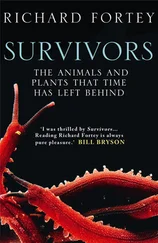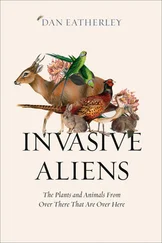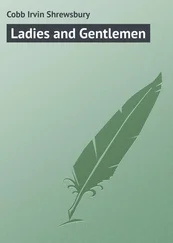Andrew H. Cobb - Herbicides and Plant Physiology
Здесь есть возможность читать онлайн «Andrew H. Cobb - Herbicides and Plant Physiology» — ознакомительный отрывок электронной книги совершенно бесплатно, а после прочтения отрывка купить полную версию. В некоторых случаях можно слушать аудио, скачать через торрент в формате fb2 и присутствует краткое содержание. Жанр: unrecognised, на английском языке. Описание произведения, (предисловие) а так же отзывы посетителей доступны на портале библиотеки ЛибКат.
- Название:Herbicides and Plant Physiology
- Автор:
- Жанр:
- Год:неизвестен
- ISBN:нет данных
- Рейтинг книги:5 / 5. Голосов: 1
-
Избранное:Добавить в избранное
- Отзывы:
-
Ваша оценка:
- 100
- 1
- 2
- 3
- 4
- 5
Herbicides and Plant Physiology: краткое содержание, описание и аннотация
Предлагаем к чтению аннотацию, описание, краткое содержание или предисловие (зависит от того, что написал сам автор книги «Herbicides and Plant Physiology»). Если вы не нашли необходимую информацию о книге — напишите в комментариях, мы постараемся отыскать её.
Discover the latest developments in herbicide and weed biology Herbicides and Plant Physiology,
Arabidopsis
Herbicides and Plant Physiology
Herbicides and Plant Physiology — читать онлайн ознакомительный отрывок
Ниже представлен текст книги, разбитый по страницам. Система сохранения места последней прочитанной страницы, позволяет с удобством читать онлайн бесплатно книгу «Herbicides and Plant Physiology», без необходимости каждый раз заново искать на чём Вы остановились. Поставьте закладку, и сможете в любой момент перейти на страницу, на которой закончили чтение.
Интервал:
Закладка:
1.9.1 Traditional methods
It was recognised in medieval times that the rotation of crops with fallow was the best means to conserve soil fertility and to prevent the build‐up of pests, diseases and weeds. The later use of ‘cleaning’ crops (such as turnips and potatoes) allowed weed control by hand during active growth, and was balanced against ‘fouling’ crops (such as cereals) which could not be similarly weeded. By the mid‐nineteenth century fertility was maintained from clover and livestock manure, and weed control by ‘cleaning’ crops, so that the unprofitable fallow period could be avoided. The advent of chemical fertilisers in the early twentieth century removed the need for clover, and profitability increased by the use of sugar beet as a combined cleaning and ‘cash’ crop. However, after the Second World War, increased urbanisation and industrialisation have reduced the available workforce, and herbicides have gradually replaced the hoe. Similarly, farm practices have become increasingly mechanised, such that the continuous cultivation of one crop (monoculture) has become widespread, and reduced cultivation techniques are now in vogue.
1.9.2 Chemical methods
Chemical weed control is a twentieth‐century technology. Copper sulphate was the first chemical used at the turn of the twentieth century to control charlock ( S. arvensis ) in oats, and soon after came corrosive fertilisers (such as calcium cyanamide) and industrial chemicals (including sodium chlorate and sulphuric acid). Modern synthetic herbicides first appeared in France in 1932 following the patenting of DNOC (4,6‐dinitro‐ o ‐cresol) for the selective control of annual weeds in cereals. Further dinitro‐cresols and dinitrophenols soon appeared, but these compounds had variable effectiveness and appeared to kill animals as well as plants. The discovery of the natural plant growth ‘hormone’ auxin in 1934 led to the further discovery of the synthetic growth regulators 2,4‐D and MCPA based on phenoxyacetic acid chemistry. These compounds were the first truly selective herbicides that could reliably kill broad‐leaved weeds in cereal crops, and they developed widespread popularity and use after the Second World War (Kirby, 1980). These compounds truly ‘replaced the hoe’ so that cereals could no longer be regarded as ‘fouling’ crops, and paved the way to the current practice of cereal monocultures.
Since the 1950s an increasing proportion of world cereal crops has become regularly treated with agrochemicals to achieve the control of an ever‐widening variety of weeds. Nowadays, chemical weed control has expanded to probably every crop situation in the world. Modern chemical weed control is not only more economical than traditional methods, but also has important technical advantages as weeds growing closest to the crop, and hence competing most for resources, can be controlled by selective herbicides. Furthermore, less crop‐root disturbance is evident than with mechanical hoeing and fewer, if any, weed seeds are brought to the surface in the process. Finally, farmers now have chemical answers for most weed problems at a reasonable price.
1.9.3 An integrated approach
The development of integrated crop management practices means that integrated weed management (IWM) systems have been developed that also embrace environmental and financial factors. The IWM systems need to be effective enough for long‐term maintenance of natural resources and agricultural productivity and also to have minimal adverse environmental impact combined with adequate economic returns to the farmer.
Key aspects of IWM systems include the prevention of weed infestation, the identification of weed species that are present, the mapping and monitoring of weed populations, the prioritisation of management, management using a combination of mutually supportive techniques (manual, mechanical, cultural, biological and chemical methods) and evaluation of their success combined with documentation and perseverance.
Through the use of such systems it is hoped that weed management may be carried out in a sustainable manner, giving protection to both financial returns and to agroecosystems.
1.9.3.1 Cultural methods
These involve tillage, where the soil is turned over with a plough and harrow before the crop is planted; flooding, to which rice is tolerant but associated weeds are not; mulching, with fabrics or synthetic membranes, which may be biodegradable, to conserve soil moisture and prevent the germination of weed seeds; and mechanical harrows, removing weeds growing in between rows of crops.
1.9.3.2 Alternative methods
Concerns about the widespread use of glyphosate in public parks and open spaces, including gardens, has led to the marketing of several unconventional alternative methods for weed control that do not rely on chemicals alone. Examples include foams, applied with hot water containing plant oils and sugars; pulses of electricity, which can kill plants by destroying the vascular bundles; microwaves, that can kill weed seeds in the soil; and directed burning with a naked flame. While these treatments may be chemical‐free, they can be labour intensive, costly, often require more than one treatment and have their own risks associated with use.
1.9.3.3 Precision weed control
Instead of spraying a whole field, precision technology can now be used to direct sprays to the weedy areas only, reducing blanket spraying and resulting in environmental benefits, such as introducing less herbicide into the environment. Aerial drones can be used to create weed maps, identifying areas to be treated. Image analysis technology is becoming increasingly refined to detect small differences in vegetation owing to weeds, often by spectral information alone and dedicated software that can identify known shapes and growth habits of weeds. Aerial photography of a crop can also be a valuable, non‐destructive method to monitor weed spread and control over time. Unmanned ground vehicles with mounted sprayers can then treat the weeds as detected. Indeed, it is perhaps only a matter of time before robotics are more widely used to monitor, detect and ensure precision weed control.
1.9.3.4 Conservation agriculture
Conservation agriculture (CA) is a system that avoids or minimises soil disturbance, combined with soil cover and crop diversification. It is considered to be a sustainable agro‐ecological approach to conserving resources in agricultural production. A major challenge to CA is weed management without the use of herbicides.
The review paper by Sims et al . (2018) lists and evaluates options for ecological and integrated weed management in CA to prevent weed pressure from building. The choice of methodology will depend on what technical options are locally available and the prevailing economic environment. A summary of methods is presented below:
1 Quality seed and clean equipment: use proven quality seed and clean machinery to avoid or lessen weed seed introduction from the external environment.
2 Reduce the weed seed bank: to deplete the weed seed bank, seed set should be avoided wherever possible. Reduced tillage and cover crops can favour weed seed predation, especially by insects and birds. ‘Beetle banks’ are strips of natural vegetation and grasses that provide a haven for seed eaters and can also prevent potential soil erosion if established to follow the contours of the land. Increased germination by minimal soil disturbance followed by mechanical or chemical control may eliminate weed flushes prior to crop establishment. Prevention of the shedding of weed seeds at cereal crop harvest can be achieved by mechanical means. ‘Chaff Carts’ are trailers attached to the rear of the harvester to collect chaff and weed seeds, which are the collected for disposal, or for animal feed. A ‘weed seed mill’ can also be trailed behind the combine and contains a mill that pulverises the chaff and weed seeds. The resultant mixture may be returned to the field as nutrients. ‘Weed headers’ remove weed flowers growing above crop height before the seed heads appear. In this case, horizontal rotors fitted with blades are attached to a tractor. This method has proven effective in low‐growing crops, such as sugar beet.
Читать дальшеИнтервал:
Закладка:
Похожие книги на «Herbicides and Plant Physiology»
Представляем Вашему вниманию похожие книги на «Herbicides and Plant Physiology» списком для выбора. Мы отобрали схожую по названию и смыслу литературу в надежде предоставить читателям больше вариантов отыскать новые, интересные, ещё непрочитанные произведения.
Обсуждение, отзывы о книге «Herbicides and Plant Physiology» и просто собственные мнения читателей. Оставьте ваши комментарии, напишите, что Вы думаете о произведении, его смысле или главных героях. Укажите что конкретно понравилось, а что нет, и почему Вы так считаете.











